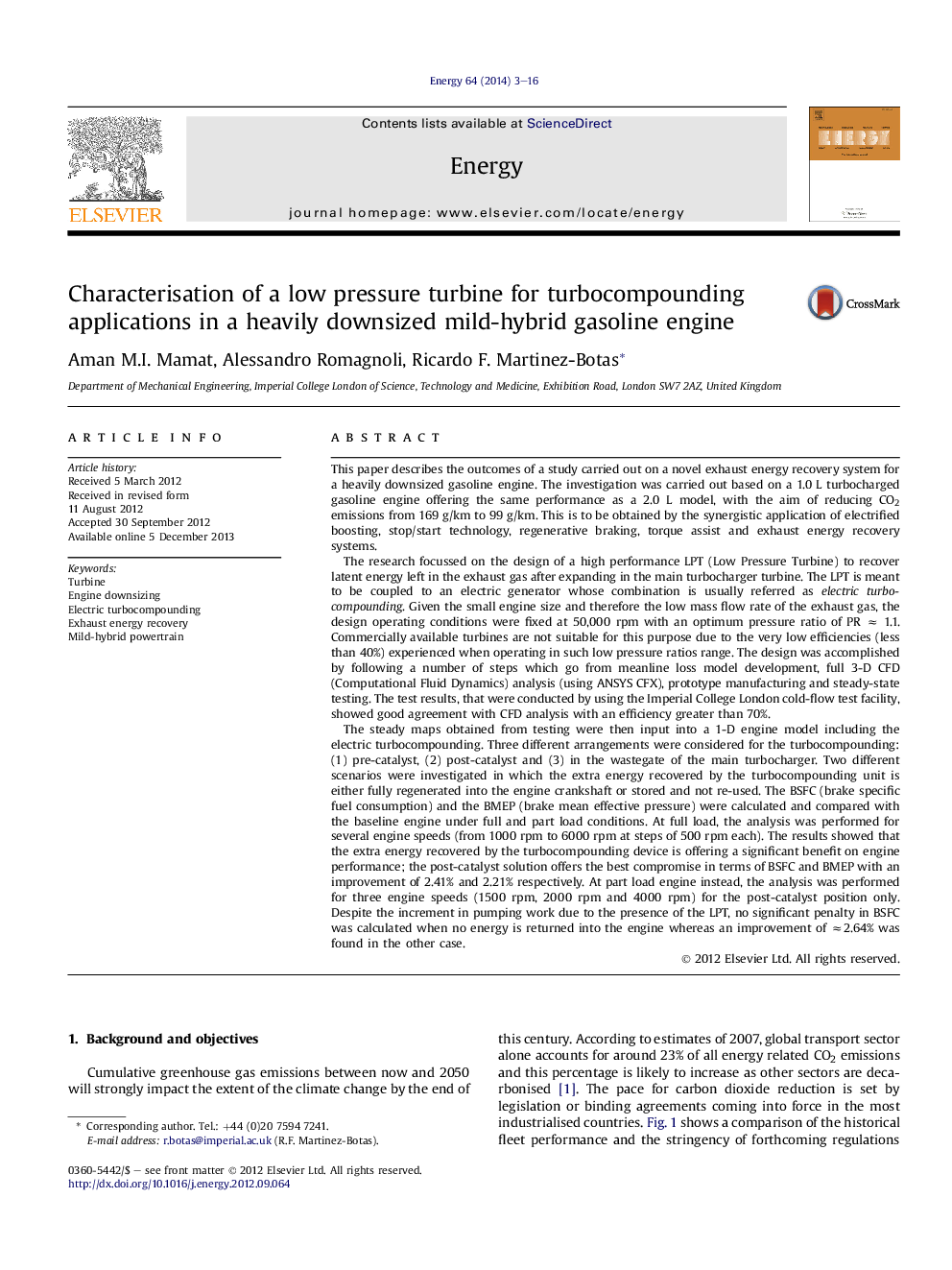| Article ID | Journal | Published Year | Pages | File Type |
|---|---|---|---|---|
| 8078624 | Energy | 2014 | 14 Pages |
Abstract
The steady maps obtained from testing were then input into a 1-D engine model including the electric turbocompounding. Three different arrangements were considered for the turbocompounding: (1) pre-catalyst, (2) post-catalyst and (3) in the wastegate of the main turbocharger. Two different scenarios were investigated in which the extra energy recovered by the turbocompounding unit is either fully regenerated into the engine crankshaft or stored and not re-used. The BSFC (brake specific fuel consumption) and the BMEP (brake mean effective pressure) were calculated and compared with the baseline engine under full and part load conditions. At full load, the analysis was performed for several engine speeds (from 1000Â rpm to 6000Â rpm at steps of 500Â rpm each). The results showed that the extra energy recovered by the turbocompounding device is offering a significant benefit on engine performance; the post-catalyst solution offers the best compromise in terms of BSFC and BMEP with an improvement of 2.41% and 2.21% respectively. At part load engine instead, the analysis was performed for three engine speeds (1500Â rpm, 2000Â rpm and 4000Â rpm) for the post-catalyst position only. Despite the increment in pumping work due to the presence of the LPT, no significant penalty in BSFC was calculated when no energy is returned into the engine whereas an improvement of â2.64% was found in the other case.
Related Topics
Physical Sciences and Engineering
Energy
Energy (General)
Authors
Aman M.I. Mamat, Alessandro Romagnoli, Ricardo F. Martinez-Botas,
